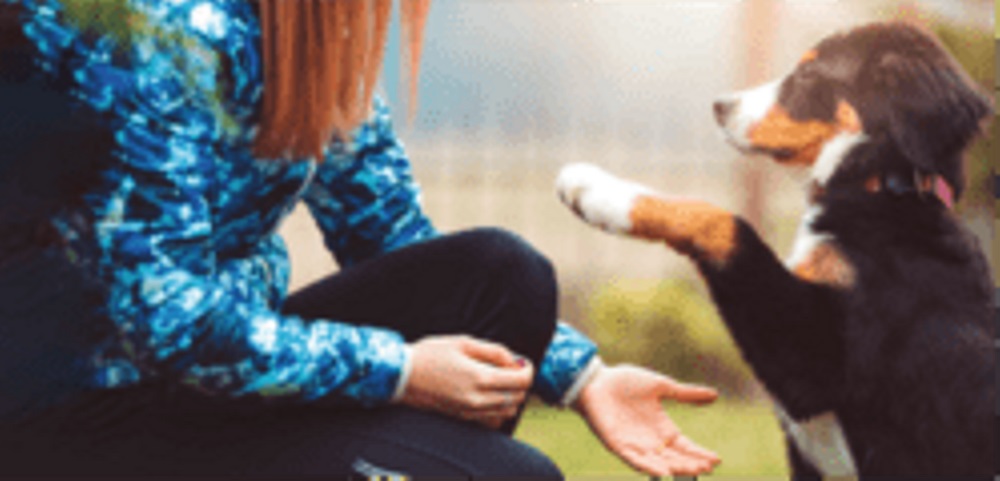Training your new pets

Adopting a pet is an exciting life milestone for many people. Whether it’s your first feline or your penultimate pooch, it’s important to know how to implement key training strategies to set you both up for success and set your relationship off on the right foot.
Puppies
Having a well-behaved and socialised dog is easy if you start training them as a puppy. From toilet training to responding to cues, the sooner you implement a training routine, the sooner your pooch will be a dream in the dog park.
Praise and positive reinforcement
None of us like being told off, and just like us, dogs respond well to praise and positive affirmations. When praising your puppy, pat them under the chin or chest (it’s more intimate that a head or back pat and will create a closer bond). Refrain from yelling at or punishing your puppy for disobeying your cues, this is likely to create a negative association and can impact the success of your training.
Return and reward
‘Will work for snacks’ is just as true a statement for your puppy as it is for some of us. A dog treat or highly-flavoured food is the best reward for when your puppy has done something you’ve asked them. Remember not to overfeed, treats should only make up 10% of their daily diet.
Start them early
Puppy training is best started when your pooch is eight weeks old. They learn quickly and will begin operating at full learning capacity between eight and 12 weeks old. When training, implement short, regular sessions throughout the day. Five‑minute sessions, four or five times a day is best to ensure your puppy is giving you their full attention, not getting distracted with thoughts of ball. Lastly, don’t let your puppy do things when they’re young that you don’t want them to do later in life. If jumping onto furniture or sleeping in your bed isn’t your thing, ensure you curtail any behaviour sooner rather than later. Enrolling your puppy in dog training is a great way for you both to learn the basics but starting with these tips should have you headed in the right direction.
Kittens
There’s a common misconception that kittens can’t be trained. But, just like any other intelligent being, kittens can learn how to play, socialise, feed and toilet indoors with the right approach.
Bed training
Even the fanciest cat bed will be useless unless you can train your kitten to use it. Start by using food as an encouragement by placing your kitten’s meal on the bed, letting them use the space freely so they learn to enjoy it. Placing your kitten’s bed in a quiet part of your house or apartment will help your kitten associate their bed as a safe space they can retreat to should they feel scared or threatened.
It’s all about who you know
Despite popular belief, cats are highly social animals. Kittens experience their prime socialisation period between two to seven weeks of age. To avoid raising a nervous cat, socialise them with as many people and other animals as possible. Fill each experience or social interaction with treats to help your kitten create a positive association. Remember, socialising your kitten needs to be done on their terms, you should never chase or pick up a cat if they don’t want to be held.
Play nice!
Just like toddlers, kittens have a lot of energy. Playing together is a lovely way to form a bond and is a positive outlet for your kitten’s energy. Avoid rough play with your kitten; they should learn it’s not okay to use their teeth or claws on your skin. Instead, use toys like a ball, an animal on a stick, or catnip, and ensure rough play is restricted to these items.
Last of the litter
Litter training is as simple as placing your kitten inside the litter box to familiarise them with the box’s location. Let your kitten get accustomed to the new environment and their natural instincts to scrape up and cover their faeces should trigger. If you’re having difficulty litter training, try sitting and holding your kitten in the litter box for a few minutes while reassuring them.
Grub’s up
Create a healthy habit with your kitten when it comes to mealtimes by maintaining an appropriate routine. Feed them at appropriate intervals throughout the day, and ensure they’re being fed food specifically made for kittens or cats. Not only does handfeeding create a bad routine with food, common foods like raisins, grapes, chocolate, garlic, and onions are toxic to cats and could result in an unwelcomed visit to the vet. Using the tips above should give you and you furry friends the right tools you need for effective training and set you up for a lifetime of happiness together.
To find out more on options to best protect your new pet check out our dog and cat insurance pages.